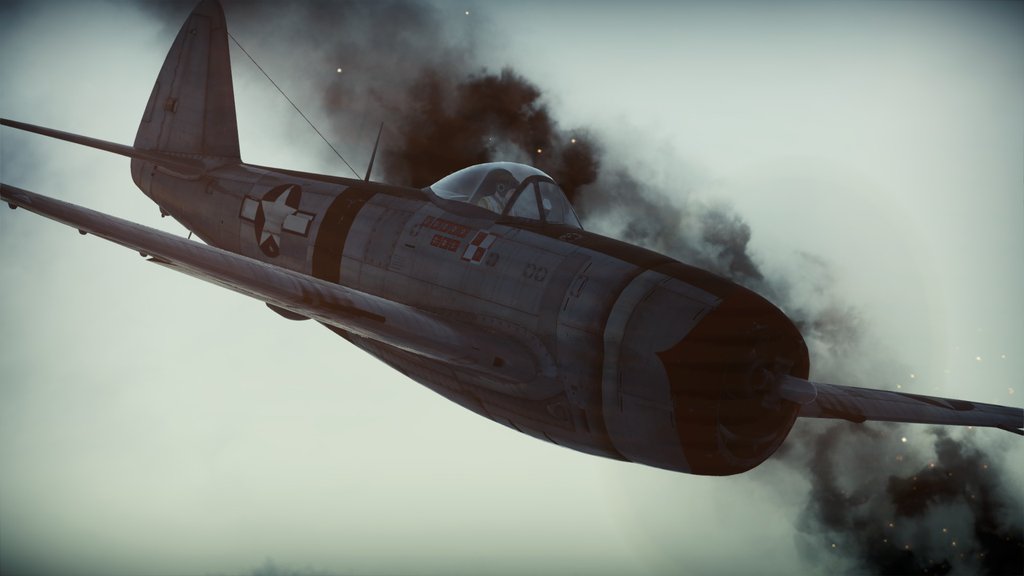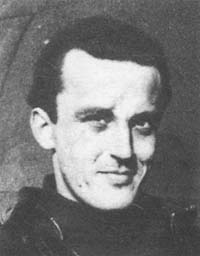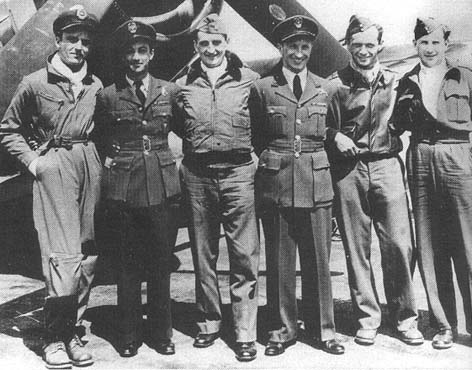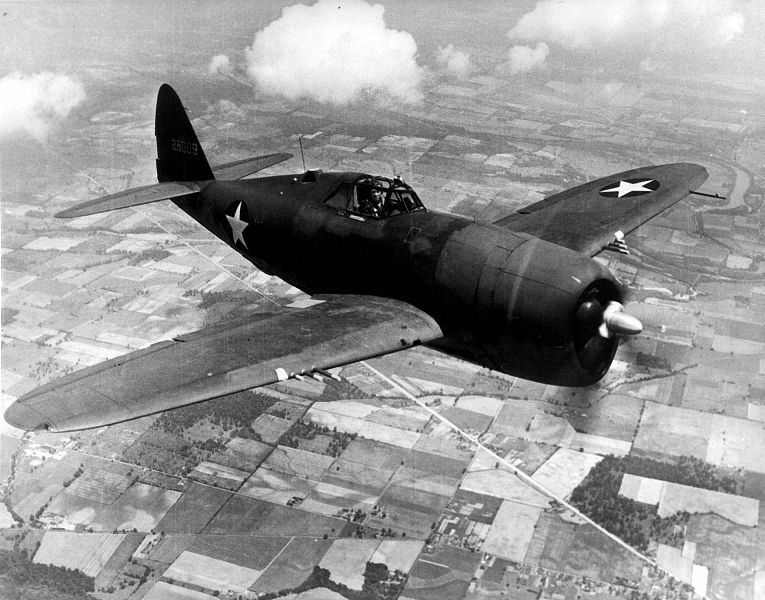
System Requirements
- For PC
- For MAC
- For Linux
Minimum
- OS: Windows 7 SP1/8/10 (64 bit)
- Processor: Dual-Core 2.2 GHz
- Memory: 4GB
- Video Card: DirectX 10.1 level video card: AMD Radeon 77XX / NVIDIA GeForce GTX 660. The minimum supported resolution for the game is 720p.
- Network: Broadband Internet connection
- Hard Drive: 17 GB
Recommended
- OS: Windows 10/11 (64 bit)
- Processor: Intel Core i5 or Ryzen 5 3600 and better
- Memory: 16 GB and more
- Video Card: DirectX 11 level video card or higher and drivers: Nvidia GeForce 1060 and higher, Radeon RX 570 and higher
- Network: Broadband Internet connection
- Hard Drive: 95 GB
Minimum
- OS: Mac OS Big Sur 11.0 or newer
- Processor: Core i5, minimum 2.2GHz (Intel Xeon is not supported)
- Memory: 6 GB
- Video Card: Intel Iris Pro 5200 (Mac), or analog from AMD/Nvidia for Mac. Minimum supported resolution for the game is 720p with Metal support.
- Network: Broadband Internet connection
- Hard Drive: 17 GB
Recommended
- OS: Mac OS Big Sur 11.0 or newer
- Processor: Core i7 (Intel Xeon is not supported)
- Memory: 8 GB
- Video Card: Radeon Vega II or higher with Metal support.
- Network: Broadband Internet connection
- Hard Drive: 95 GB
Minimum
- OS: Most modern 64bit Linux distributions
- Processor: Dual-Core 2.4 GHz
- Memory: 4 GB
- Video Card: NVIDIA 660 with latest proprietary drivers (not older than 6 months) / similar AMD with latest proprietary drivers (not older than 6 months; the minimum supported resolution for the game is 720p) with Vulkan support.
- Network: Broadband Internet connection
- Hard Drive: 17 GB
Recommended
- OS: Ubuntu 20.04 64bit
- Processor: Intel Core i7
- Memory: 16 GB
- Video Card: NVIDIA 1060 with latest proprietary drivers (not older than 6 months) / similar AMD (Radeon RX 570) with latest proprietary drivers (not older than 6 months) with Vulkan support.
- Network: Broadband Internet connection
- Hard Drive: 95 GB
Ace of the Month – Boleslaw Michal ‘Mike’ Gladych
Attention! This news was published on the old version of the website. There may be some problems with news display in specific browser versions.

Special: from 11:00 GMT (3:00 PST) December 10th to 11:00 GMT (3:00 PST) December 11th experience earned while flying P-47D-25 and P-47D-28 Thunderbolt will be increased by 30%
Squadron Leader Boleslaw Michal ‘Mike’ Gladych

Reversing his turn and craning his neck to check the skies behind his heavy fighter, the lone Thunderbolt pilot winced as he saw the relentless pair of Focke-Wulf 190s line up to fire again at his damaged aircraft. Low on fuel and critically low on ammunition, he realized that he was running out of options. Unable to evade the enemy fighters in his near crippled P-47, the pilot breathed a sigh of relief as the German fighters decelerated to fly to either side of him, signaling for him to land. Exhausted, frantically searching for options, the pilot continued for nearly ten minutes with his enemies sat on either wing. There – up ahead, the rough strip runway of a German airfield was visible. Blinking a bead of sweat from his eyes, the Thunderbolt pilot lowered his gear and flaps to signal his surrender. The two German fighters moved in to escort him down the approach path to land. As the airfield swam closer into view, the Thunderbolt pilot allowed himself a faint smile. He centered his gunsights over one of the AA gun pits and thumbed his fire button. The eight fifty caliber Brownings burst into life, sending rounds smashing down into the gun pit. Almost instantly the air around the three fighters was filled with tracer as the gunners returned fire. The two Focke-Wulfs broke away rapidly, debris falling from one of them. Seizing his opportunity, Polish ace Boleslaw ‘Mike’ Gladych opened the throttle of his P47 and darted for the coast.
Born in Warsaw on May 17th 1918, Boleslaw Michal Gladych inherited a passion for all things technical and mechanical from his father, a technical high school teacher. However, Gladych did not inherit his father’s academic disciplines and so changed schools three times before finally being admitted to a military high school in Lwow in 1932, two years before his father passed away. He completed his secondary education at Lwow, obtained a degree in Maths-Science, showed promise as a keen musician and after a very brief amount of time with the 72nd Infantry Regiment in Radom he joined the Polish Air Force in January 1938. A graduate of the ‘Last 13th’ class at the Polish Air Force College, Deblin, Gladych was commissioned as a 2nd Lieutenant on September 1st 1939; the very day that Germany invaded Poland. He had, however, only just completed his flying training and due to his natural ability he had already been selected to fly fighters. With only limited experience flying the PWS-26, RWD-10, PZL P.7 and PZL P.11 Gladych did not see combat during the German invasion and managed to escape to France with a group of fellow aviators via an internment camp in Rumania and a Greek ship to Marseille. Eager to fly in combat, Gladych volunteered for service in the ‘Finland’ squadron of the French Armee de l’air; a unit intended for use in the Finnish-Soviet war. Gladych trained on the Caudron C.714 and MS406 fighters, but before the unit could be sent to combat a cease-fire had been signed between Finland and the Soviet Union.
The unit was now designated Groupe de Chasse 1/145 “Varsovie” and was added to the French order of battle in preparation for a German invasion of France. GC 1/145 was the only full Polish unit in the French Armee de l'air. Gladych was part of the 2nd Escadrille, under the command of Capt Juliusz Frey. Although still equipped with the hopelessly outclassed C.714 fighters, the Polish aviators flew out to meet the modern machines and veteran fliers of the Luftwaffe. By late May of 1940, the French Minister of War ordered than the substandard C.714 fighters were to be withdrawn from service immediately. As a low priority, the Polish fliers were not assigned replacement aircraft and so elected to continue to fight in their woefully outclassed C.714s. Even though flying against far superior aircraft, the pilots of GC 1/145 were still able to shoot down at least 12 German aircraft in the skies over France, including the several of the dreaded Bf109Es. Gladych himself was involved in the thick of the action whilst flying C.714 side number ‘13’; on one occasion surviving his aircraft being shot down. Gladych later recalled an engagement in June where, after a drawn out encounter with a 109E, his aircraft was severely damaged. The German pilot waggled his wings at the crippled French fighter and then broke off the engagement rather than finishing him off. However, despite the brave efforts of the defending forces, France fell to the German advance and a surrender was signed on June 22nd 1940. Gladych and the survivors from his unit fled to Great Britain onboard a British ship; due to the speed of the withdrawal, no records concerning Gladych’s personal combats over France are known to have survived.
After arriving in Britain, Gladych was accepted into the Polish Air Force arm of the RAF, and given the rank of Pilot Officer in RAF Fighter Command. It was not until February 1941 that Gladych was posted to No.57 Operational Training Unit at RAF Hawarden near Chester for single seat fighter training. After converting to the Spitfire Mk.I, Gladych joined the famous No.303 (Polish) Squadron based at RAF Northolt in April, where he now flew alongside some of Poland’s most battle hardened pilots including Battleof Britain veteran Jan Zumbach. It was only five days until he was credited with his first recorded aerial victory.
Perhaps Gladych’s most successful day was on June 23rd 1941, when No.303 Sqn was involved in two sorties over occupied France, the first escorting bombers from Redhill to Bethune and the second mission from Dungeness and Le Touquet. Gladych, now flying a Spitfire Mk.IIb, shot down three Bf109s and claimed a forth probable ‘kill’ over the course of the two sorties, but after sustaining damage and injuries following a collision where his propeller cut off the tail of a Bf109 (which some sources claim he intentionally rammed) he crashed his damaged Spitfire at RAF Manston in Kent on returning to Britain, colliding with a telegraph pole on landing. The collision and subsequent crash landing left him with a fractured skull, fractured collarbone and a permanent scar over his right eye. Following surgery at Ramsgate hospital and two months of recuperation, Gladych returned to No.303 Sqn at the end of August, confirming another aerial victory the next month before being promoted to Flying Officer in December.

In February 1942 Gladych was removed from flying duties to carry out a two month Intelligence Officer’s Course before returning to No.303 Sqn in April. During this period he had volunteered to join the elite Polish unit which would become known as the ‘Skalski Circus’ under the command of leading Polish ace Stanislaw Skalski, but due to health problems Skalski’s Polish Fighting Team deployed to Tunisia without him. By May he had been promoted to Flight Lieutenant and now a seasoned veteran, was leading a flight of four Spitfires on operational sorties.
In July 1942 Gladych was posted to No.302 “City of Poznan” squadron, flying the Spitfire Mk.V. Operations over occupied France were now increasing in tempo, and Gladych accompanied his colleagues in attacks of enemy airfields at the end of the month, using hand grenades dropped from the cockpit of their aircraft as well as gunfire. He was rotated out of front line duties from mid September to early December, but continued a busy programme of offensive sorties during early 1943, confirming a further enemy aircraft destroyed over Lille. During this encounter he was attacked and severely damaged by an FW 190 which, echoing his earlier encounter whilst flying with GC 1/145, resulted in the German pilot waggling his wings before disengaging. Gladych later maintained that he believed this to be the same pilot, although post war research indicated this to be unlikely. Gladych spent the summer of 1943 operating out of Perranporth in Cornwall, before returning to the busier South East of England. He claimed a Bf109G and a probable FW190 on Spetember 8th. Shortly after this he converted to the Spitfire IX and in November was presented with the Silver Cross of Virtuti Militari as well as received the British Distinguished Flying Cross from AOC 11 Group, Air Vice Marshall Hugh Saunders.
Another anecdote which Gladych would later recite occurred in Autumn of 1943, where in a case of mistaken identity he reputedly nearly succeeded in shooting down an aircraft transporting British Prime Minister Winston Churchill. Gladych was allegedly grounded as a punishment.
 During the previous year, Gladych had become acquainted with Captain Francis Gabreski, a fighter pilot in the US Army Air Force who was of Polish descent. After a period of inactivity in England, Gabreski had visited the Polish squadrons at RAF Northolt and had even flown Spitfire on operations. In February 1944, Gladych called in the favour with the now Major Gabreski and together with fellow Pole Witold Lanowski, flew P47 Thunderbolts with the 61st Fighter Squadron of the USAAF’s 56th Fighter Group. This secondment was carried out entirely without approval. It was also whilst flying a P47 that Gladysch again encountered the mysterious German pilot who he believed he had fought with twice before; in March 1944 he shot down an FW 190 whilst escorting US bombers to Germany but, with both fuel and ammunition low and now separated from the rest of his flight, he was attacked by a pair of FW 190s. Forced low in the encounter, Gladych lowered his landing gear and made out to line up for an approach to a German airfield near Vechta. His attackers, believing he was surrendering, followed him along his approach but, as he neared the airfield, he opened fire on the aerodrome’s AA gunners with the last of his ammunition. The German defenses burst into life, accidentally hitting one of the FW 190s and allowing Gladych to make his escape in the confusion, although he ran out of fuel and was forced to bail out. For his actions, the USAAF awarded Gladych the Silver Star. In June 1944 Gladych, now a Squadron Leader, was made the Polish Liaison Officer to HQ of No.12 Group RAF, but was threatened with disciplinary action when he continued to fly unofficially with Gabreski’s P47 Group, including combat sorties in support of Operation Overlord, the D-Day landings in Normandy. Gladych shot down a Bf109 on D-Day itself, and a similar type the following day.
During the previous year, Gladych had become acquainted with Captain Francis Gabreski, a fighter pilot in the US Army Air Force who was of Polish descent. After a period of inactivity in England, Gabreski had visited the Polish squadrons at RAF Northolt and had even flown Spitfire on operations. In February 1944, Gladych called in the favour with the now Major Gabreski and together with fellow Pole Witold Lanowski, flew P47 Thunderbolts with the 61st Fighter Squadron of the USAAF’s 56th Fighter Group. This secondment was carried out entirely without approval. It was also whilst flying a P47 that Gladysch again encountered the mysterious German pilot who he believed he had fought with twice before; in March 1944 he shot down an FW 190 whilst escorting US bombers to Germany but, with both fuel and ammunition low and now separated from the rest of his flight, he was attacked by a pair of FW 190s. Forced low in the encounter, Gladych lowered his landing gear and made out to line up for an approach to a German airfield near Vechta. His attackers, believing he was surrendering, followed him along his approach but, as he neared the airfield, he opened fire on the aerodrome’s AA gunners with the last of his ammunition. The German defenses burst into life, accidentally hitting one of the FW 190s and allowing Gladych to make his escape in the confusion, although he ran out of fuel and was forced to bail out. For his actions, the USAAF awarded Gladych the Silver Star. In June 1944 Gladych, now a Squadron Leader, was made the Polish Liaison Officer to HQ of No.12 Group RAF, but was threatened with disciplinary action when he continued to fly unofficially with Gabreski’s P47 Group, including combat sorties in support of Operation Overlord, the D-Day landings in Normandy. Gladych shot down a Bf109 on D-Day itself, and a similar type the following day.
By early July 1944, Gladych had shot down seven German fighters whilst flying P47s with the USAAF, including two Bf109s in a single encounter and a Ju88 in August. After threats of expulsion from the Polish Air Force, Gladych and the five Poles who accompanied him during their operations with the US 61st Fighter Squadron had their status sanctioned in August 1944 as unpaid leave from the Polish Air Force. Differing sources quote Gladych as having shot down ten or eleven German aircraft whilst flying P47s. Gladych continued to fly with the USAAF until the end of the war, after which his life took a dramatic turn when the once aggressive ‘Mad Mike’ as he was nicknamed by his American friends then decided to put his military past behind him. He emigrated to the United States with his Canadian wife, Elizabeth, where he initially flew DC-3s for Rainbow Airlines out of New York and as a manager for Boeing before qualifying as a psychotherapist and settling in Seattle, Washington State. He did, however, continue to visit Europe and, whilst in Frankfurt, Germany, he met Luftwaffe ace Major Georg-Peter Eder; the pilot of the FW 190 who had spared his life over Lille in 1943 and one of the pilots he had escaped from when pretending to land his damaged P47 at Vechta. As with many wartime pilots, his ‘score’ cannot be verified but is largely credited as seventeen kills and two probables. He was awarded both the British and American Distinguished Flying Crosses in addition to his Silver Star and the Polish Cross of Valour.
‘Mike’ Gladych passed away on July 12th 2011, aged 93. One of the most prominent members of an elite fraternity who fought not only for their own country but also for allied nations, he was the last Polish fighter ace of the Second World War.
The aircraft: Gladych flew Republic P-47D-28 Thunderbolt 4419718 whilst operating with the USAAF 61st Fighter Squadron – part of the 56th Fighter Group of the 8th Air Force. The 56th Fighter Group moved from RAF Halesworth to RAF Boxted in April 1944, and was one of the most successful fighter groups of the entire USAAF. Gladych named his aircraft ‘Pengie’ after his wife’s nickname; this particular aircraft was the forth to bear the name, hence ‘Pengie IV’.
 |
About the author:Mark Barber, War Thunder Historical ConsultantMark Barber is a pilot in the British Royal Navy's Fleet Air Arm. His first book was published by Osprey Publishing in 2008; subsequently, he has written several more titles for Osprey and has also published articles for several magazines, including the UK's top selling aviation magazine 'FlyPast'. His main areas of interest are British Naval Aviation in the First and Second World Wars and RAF Fighter Command in the Second World War. He currently works with Gaijin as a Historical Consultant, helping to run the Historical Section of the War Thunder forums and heading up the Ace of the Month series. |
Read more:



